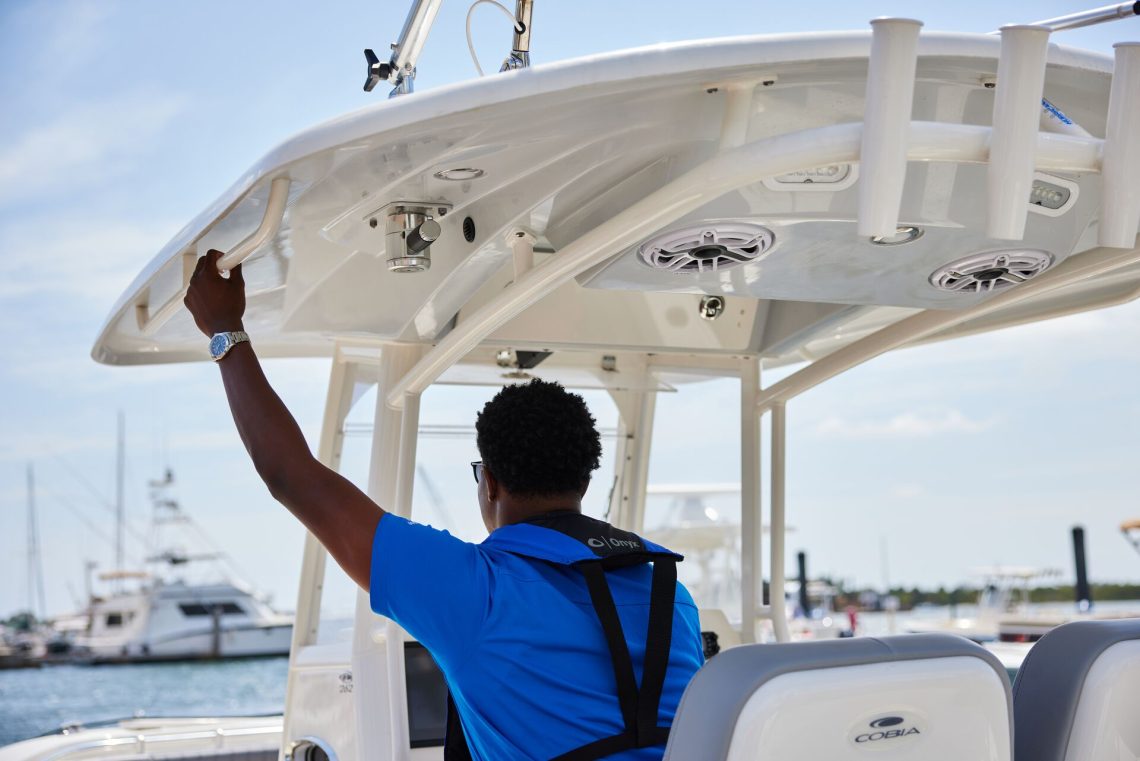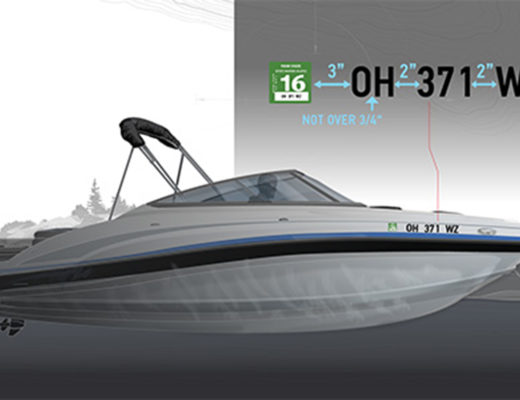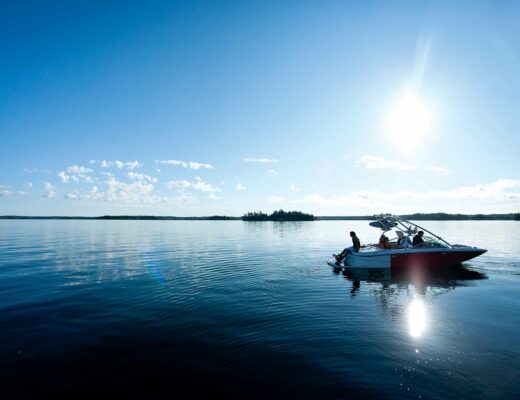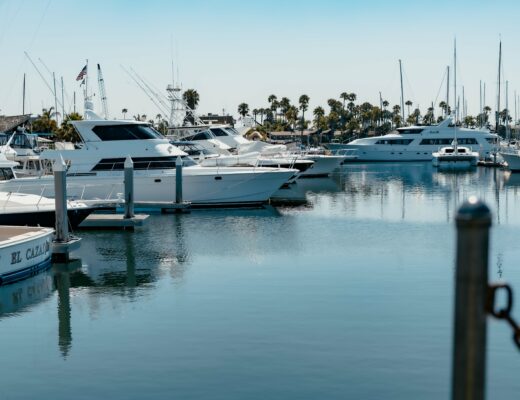What do boaters need to know about boat navigation and the right-of-way? It’s a crucial aspect of boating safely around other boaters, watersports enthusiasts, and swimmers.
After completing your BOATsmart! Safe Boating exam, you will be familiar with the rules of navigation across Canadian waterways. However, if you have not yet completed your course or are a fully licensed boater who needs a refresher, check out this crash course in boat navigation!
Remember: Even with the Navigation Rules in place, you should never presume the actions of others. Always proceed with caution. Here are a few essential things to remember as you navigate the waters this season.
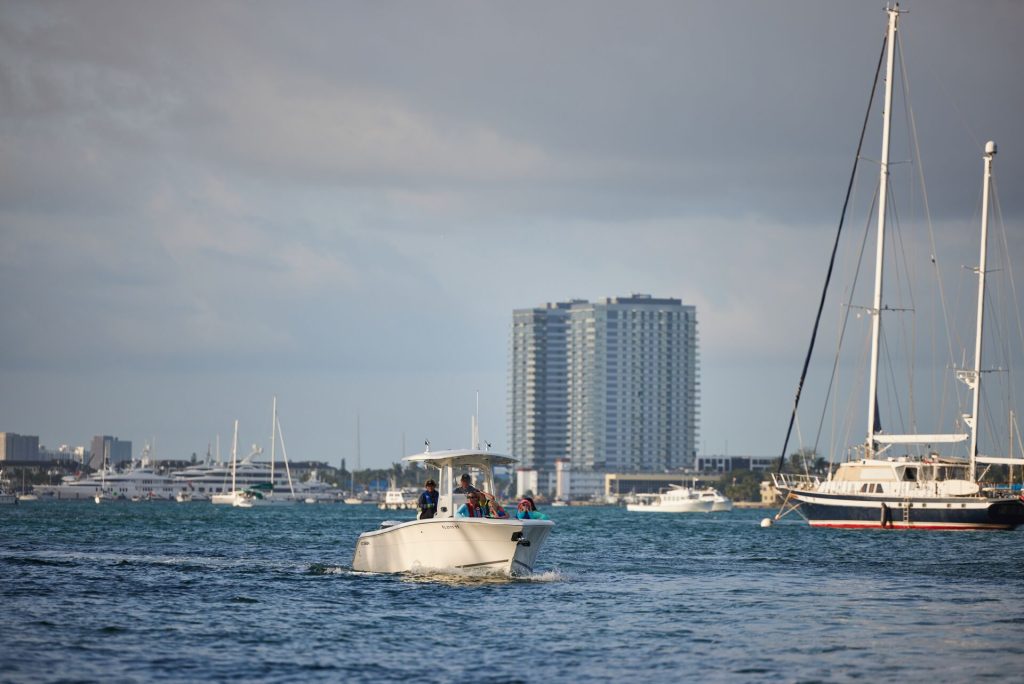
Common Boat Navigation Rule Violations
Like the rules for driving a car on a highway, boaters must follow rules of the water when on the waterways.
As a boat operator, you must practice good seamanship and obey both Inland and International Navigation Rules. The most common violations are not maintaining a proper lookout and excessive speeding.
While these might seem like simple things, you might be surprised at how often boaters exceed safe speeds or fail to lookout for hazards, other boaters, or swimmers nearby.
7 Tips to Avoid Navigation Violations on the Water
To avoid the violations we mentioned above, follow these seven BOATsmart! top tips for navigating safely in Canadian waters.
1. Maintain a Proper Lookout
Boat operators must always maintain a proper lookout by sight and hearing.
You must be able to clearly see all of your surroundings and recognize if there is a risk of collision with another boat or obstacle. If you are boating with a crew, it is helpful to assign a passenger to act as your lookout. This person can help you stay alert for oncoming traffic, local hazards, and swimmers.
2. Operate at a Safe Speed
Boat operators must always obey posted speed limits and operate at a safe speed when a speed limit is not posted.
A safe speed is a speed that allows you to take proper and effective action to avoid a collision and will allow you to stop your boat within a safe distance in relation to everything from hazards and obstructions, your distance from shore, the dock, and other boat traffic, the boat’s draft in relation to the depth of the water, a person being towed on a tube, wakeboard, etc.
A safe speed should also consider the current weather and water conditions (such as fog, rain, and rough water), the presence of background lights at night, and the maneuverability of your boat.
3. Determine Your Position and Course of Direction
When in boating traffic, you can determine who has the right-of-way by figuring out each boat’s position relative to the other on the water using the ‘sectors’ of navigation. The sectors of navigation include the port sector, the starboard sector, and the stern sector.
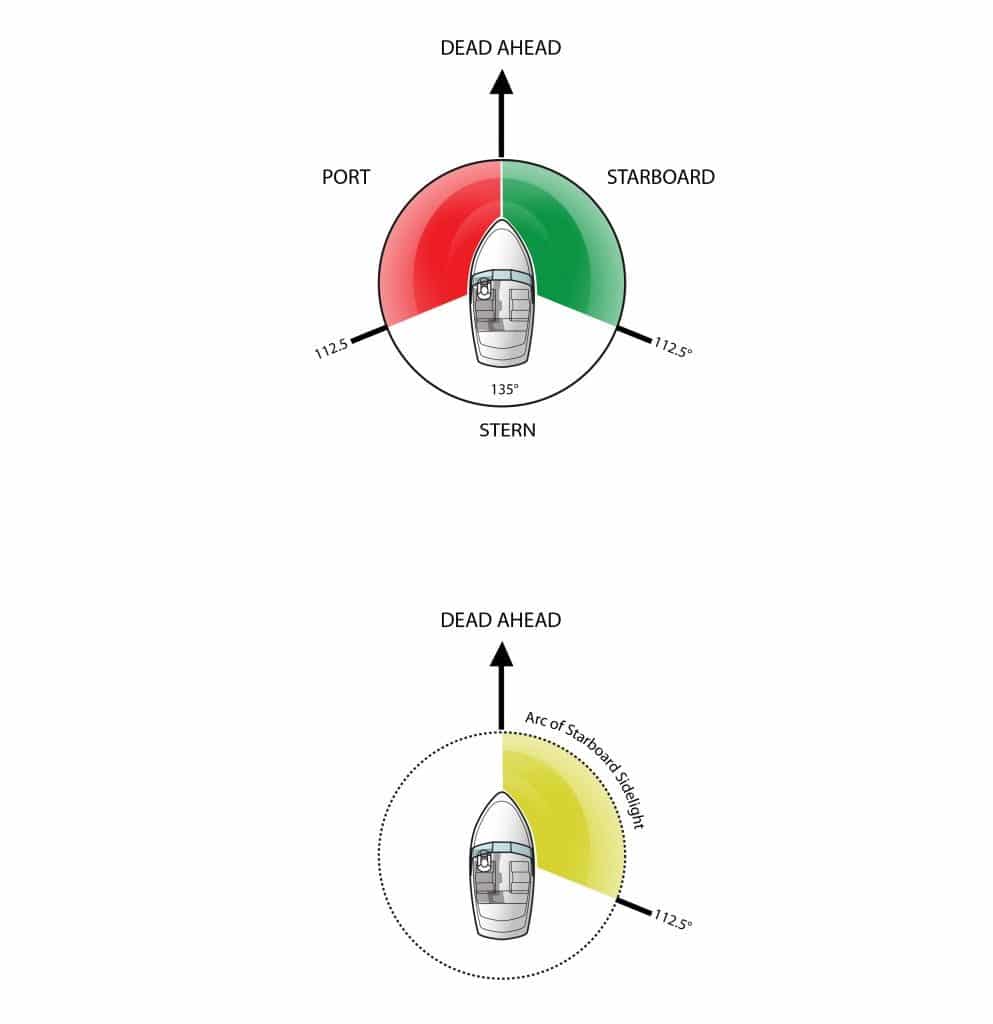
4. Determine the Risk of Collision
As a boat operator, you must use every means possible to identify the risk of collision. If you can’t confirm by looking and listening to whether the possibility of a collision exists, then you must always assume that the risk does exist and take the appropriate actions to remain safe.
The Coast Guard asks all boaters to recognize that the risk of collision is still possible even if a boat changes direction, especially if it is a large boat, a towboat, or a boat at close range.
To determine which boat has the right-of-way, you must first understand right-of-way terminology:
- Stand-on craft: Boats with the right-of-way are called the “stand-on craft.” Stand-on craft can maintain their speed and direction when they approach other boats.
- Give-way craft: Boats that do not have the right-of-way are called “give-way craft.” They must take early and substantial action to steer clear of stand-on craft and alter their speed and direction to avoid a collision.
5. Understand the Rule of Responsibility
The type of boat you are operating, and the types of boats you are approaching determine whether or not you have the right-of-way.
For example, if you’re operating a powerboat, you must give way to the following types of boats:
- A boat that’s not under command, such as an anchored or broken-down boat.
- Commercial fishing boat.
- A sailboat (unless it’s overtaking your boat, in which case you would maintain your speed and course as the stand-on craft).
- Any boats with restricted maneuverability, such as a towing boat, a boat that requires a large draft, or a work boat that picks up navigational markers.
6. Understand the Right-of-Way for Power-Driven Boats
When power-driven boats approach each other head-on, neither boat has the right of way. Both operators (A and B) must take early and substantial action to steer clear of each other and steer to starboard (to the right) as soon as possible to avoid a collision.
If a power-driven boat (B) is approaching from your port (left) sector, you are the stand-on craft (A) and have the right-of-way. To avoid an accident, you should maintain your speed and direction and be ready to take evasive action. The approaching boat (B) must take early and substantial action to avoid your boat by reducing its speed and changing direction.
However, if a power-driven boat (B) is approaching from your starboard (right) sector, you are the give-way craft and do not have the right-of-way. You must take early and substantial action to keep well clear of the other boat by altering your speed and direction.
What About Sailboats or Commercial Boats?
If you are operating a sailboat or commercial fishing boat, you must give way to a boat that’s not under command, such as an anchored boat or a broken-down boat, any boat with restricted maneuverability, such as a towing boat, a boat that requires a large draft, or a work boat picking up navigational markers.
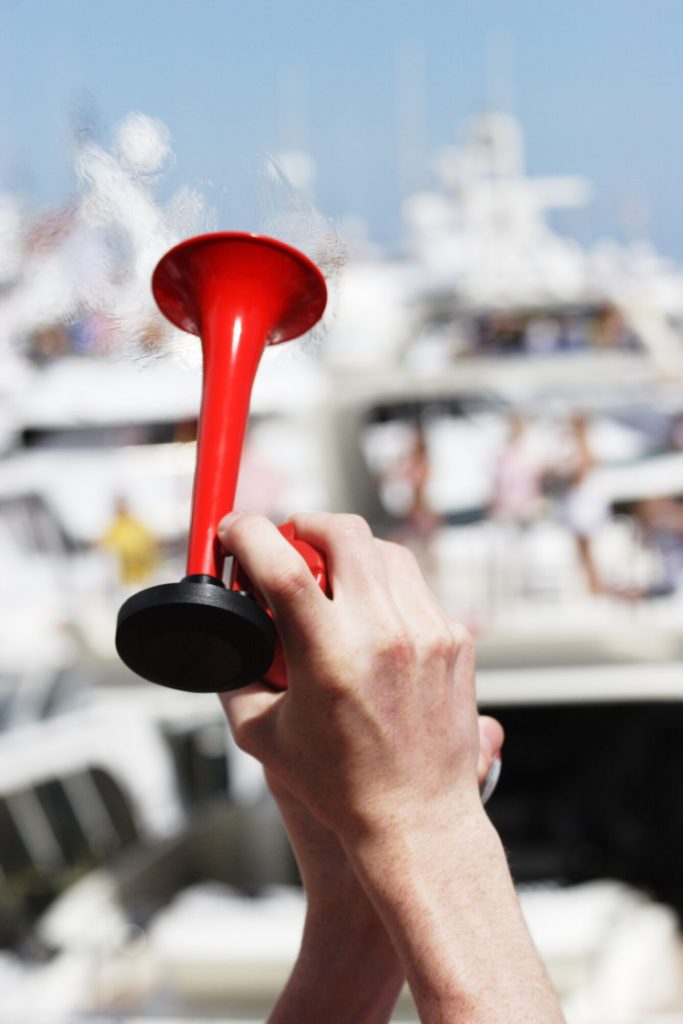
7. Use Sound Signals for Navigation
Safe boat navigation isn’t just about what you can see; you must also use what you can hear and your boat horn to communicate with others around you.
Here’s a quick list of horn blasts and what they mean:
- One short blast = I’m altering my course to starboard (to the right).
- Two short blasts = I’m altering my course to port (to the left).
- Three short blasts = I’m operating my boat in reverse.
- Five rapid blasts = I’m unsure of the other boater’s intentions.
- One long blast = I’m leaving the dock and am a motorized boat of 12 m or longer.
Exception: If you’re operating a boat on the Great Lakes:
- One short blast = I want to pass you on my boat’s port (left) side.
- Two short blasts = I want to pass you on my boat’s starboard (right) side.
During periods of reduced visibility, motorized boats should sound one long blast every two minutes. Boats at anchor should blast a sound signal rapidly for about five seconds every minute.
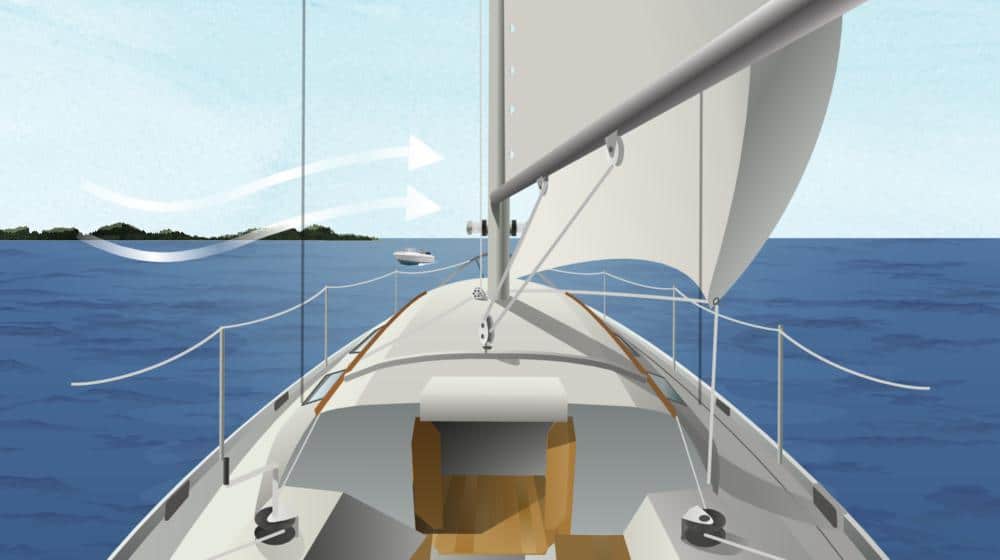
What About Sailboat Right-of-Way?
Even if you never plan on operating a sailboat, understanding the Collision Avoidance Rules for sailboats is part of being a responsible boat operator.
You should know sailboat rules to operate around sailboats safely. A sailboat always has the right-of-way over a powerboat (unless the sailboat is overtaking the powerboat, in which case the sailboat becomes the give-way craft).
Learn More About Navigation and Boater Safety with BOATsmart!
Understanding right-of-way and how to navigate waterways helps you keep yourself and others safe while boating – but it’s only one aspect of safe boating and what you need to know to get your boating license.
Take a BOATsmart! boating safety course to fully learn the rules of navigating boats in Canadian waters. You’ll also need to pass a course to get your Personal Craft Operator Card or boating license and comply with boating regulations.
Our courses are online, and you can purchase your card through our website, too! We make it convenient to learn boating safety essentials so you can get on the water right away. Click here to start your course and get licensed!
Content originally published May 23, 2018. Content most recently reviewed and updated July 30, 2024.
